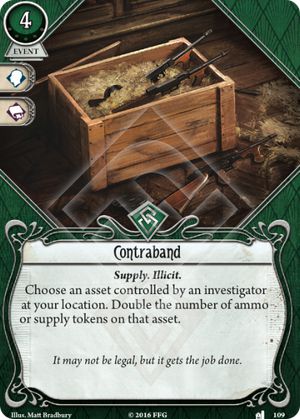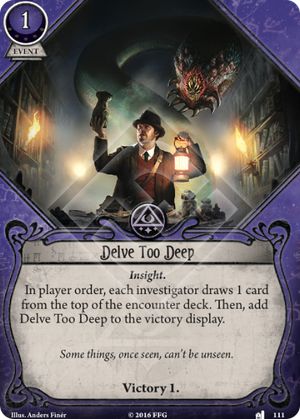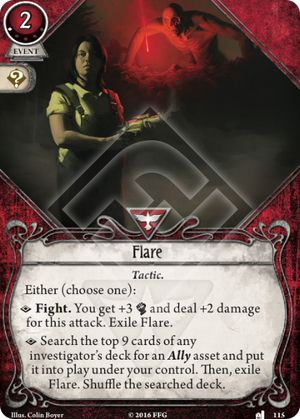Hello again my dear readers. As promised on Sunday, I am
providing an analysis of selected cards. I have decided to include Pathfinder
in the article as well, as it deserves few more words, given the general
comparison one can make based on it.
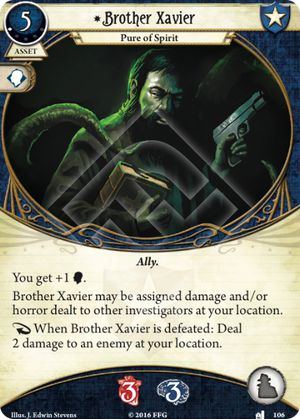 |
| Instead of "ora et labora" Brother Xavier's motto is Pray and shoot! |
The first one, however, is Brother Xavier. I do have to
agree, it’s not a terribly powerful card. The reason for it is the alternative
cost – he takes up a slot usually taken by Beat Cop. Particularly its upgraded
version is a powerful ally – increasing Combat and allowing for some test-free
damage. In case of Skids’ Leo provides another worthy alternative. Most of the
priest’s usefulness comes from being a damage/horror buffer. Unfortunately it’s
not as big of a buffer as one would imagine. Barely one Sanity more than Beat
Cop. He can, in fact, deal just as much damage as the beat Cop (2) does, you
cannot control the timing though, which limits the tasks he’s capable of
performing. Bonus to Will, while very thematic, has limited applications. Two
main ones coming to my mind are protection against the encounter deck and
helping Zoey becoming a more proficient spellcaster.
The alternative cost is the key. Please consider cards like
Bulletproof Vest or Elder Sign Amulet – they provide less protection and no
other benefits, yet cost more experience and can easily be considered better
cards. The reason for it is – they do not take an ally slot, the alternatives
are much weaker. There are barely any cards for the body slot. There are few
necklaces. However, they rarely compete with Elder Sign, as they have different
users. Generally speaking, the most powerful assets can be found among the
allies.
I am very happy, though, with the team work approach the
ally has. I am a big fan of all the cooperation elements. Shielding your teammates
from the dangers is a classic. Just as a classic is the tank character,
absorbing all the damage – it seems designers include this sub-class within
Guardian class. It’s worth noting, Guardians are low-Sanity characters and are
usually paired with low-Stamina ones, making Xavier a useful damage absorber
for both team members! With "I've had worse" added to the mix, the Tank sub-class seems to slowly emerge.
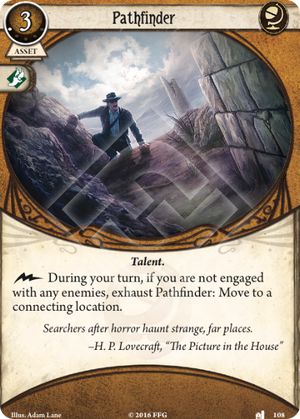 |
| Is it Jack Montrey on the picture? |
Card that can be considered in relation to Brother Xavier is
Pathfinder. You can ask, why? They are nothing alike! This is a true
observation. Let me try to explain. Pathfinder is a powerful card, basically
providing a free action per turn. Still it wouldn’t be considered as powerful,
was it occupying the ally slot. Just as Brother Xavier would be a solid card,
if he wasn’t.
The idea I’m trying to implant in your mind is – a vital
part of cards strength is the alternative cost. And vital part of alternative
cost is the slot it occupies. If a card takes no slot, even a weaker benefit
might make it worthy including in the deck.
Pathfinder is obviously blast of a card. For 1 XP (!) you
get a talent allowing you to have an additional action once per turn. Granted,
it has restrictions (only a move action, only if you are not engaged with an
enemy, only during your turn). But a free action means doing 1/3 more stuff per
your turn – this is truly what you’re missing the most – actions. And move
action is one of the most universal one – performed multiple times in basically
any scenario.
Out of 3 characters, which can include Pathfinder in their
deck, I believe it’s the strongest for Rex. Having the card allows him to use
his double-powerful investigation action more often. He also clears locations
from clue tokens quicker, hence having to move more often in general. I’m not
trying to say it’s not an obvious choice for Roland or Daisy, though – it
clearly is a very good choice for both of them, too.
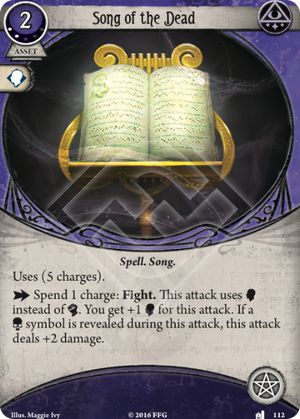 |
| Using right set of notes you can make dead dance |
Last, but not least, I’d like to have a look at Song of
Dead. I absolutely adore the design of this card for 2 reasons.
First of all, it has a non-obvious design. One can easily
create a stronger Shrivelling, adding more damage, charges etc. to it. Song of
Dead is a combat spell, which works differently. It has many small advantages –
its costs is lower, it has more charges (hence one charge costs 0.4 resources
compared to 0.75)1, never causes you to lose sanity (arguably this
might be minor flaw for Agnes) and gives a slight bonus to the test. The only
(though a hefty) shortcoming is the damage output – it basically only deals one
damage per attack. Randomly getting a skull token is not a result you can
reliably count on getting…
…unless you help your luck a bit. This slowly brings us to
the other reason why I like this card. It is a very thematic, custom made card
for Jim. At the same time it is still a card other characters can consider to
use – particularly Daisy with her low Will can consider having a copy or two to
face minor enemies.
Speaking about Jim – our jazz musician can dearly benefit
from playing the Song of Dead. His Will is slightly lower than Agnes’.
Therefore the boost is appreciated, giving him higher chances for succeeding
the test. The critical piece focuses around drawing a skull for the added
damage. Jim not only has an added chance to get a token, as he can
treat Elder Sign as Skull. He also very often uses the Grotesque Statue a lot
(more about it in upcoming post about him). Using the statue increases chances
of getting a skull even further! Here is some useful piece of math for you:
If there are 2 Skulls and one Elder Sign tokens in the bag,
chances of drawing at least one Skull/Elder Sign token are2- 37% for
15 tokens in the bag, 35% for 16 tokens in the bag, 33% for 17 tokens and
almost 31.5% for 18 tokens. Of course matter of damage is not so easy –
sometimes one damage is enough (in this situation Song of Dead is actually superior to Shrivelling), sometimes you need 2 (the opposite is true). When trying to
maximize the damage (trying to take down some major threat) even a 15 token
chaos bag yields a worse average damage (1.84, not counting increased chances
of succeeding due to a boost to Will). Last piece of pure math-stats3
– total damage done with all charges – 9.2 on average, compared to 8 of
Shrivelling. This includes using Grotesque Statue on every attack though; so
we’re talking 0XP against 6.
 |
| I hope I didn't bore you with too much math. |
Taking math into account card does not look too powerful, taking
into account the XP cost. Suddenly it becomes a tool to deal only with 1HP
opponents (or enemies who only have 1HP left). Unless, of course, you’re
playing Jim and can alternate between standard use and boosted by Grotesque
Statue attempts at dealing 3 damage.
What cards are your favorites? Do you have more interesting thoughts about cards discussed above? Please share'em with me and don't forget to visit Delve Too Deep's posts about new cards (links in my previous post about Miskatonic cards)
All images are courtesy of cardgamedb.com and fantasyflightgames.com
1 It’s bit of an oversimplification, obviously. Card costing
20 resources for unlimited charges would have an even better cost: however
being so costly would almost totally prevent you from playing the card at all.
2 This is by far most common scenario. All calculations are
rounded and delivered in percent, even though I personally prefer simple
fractions.
3 As in point 1, math approach is bit of an
oversimplification here, just providing some insight into actual usefulness of
the card.
